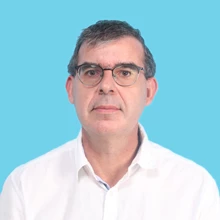 Currency of Madagascar. Andrzej Rostek / Shutterstock.com
Currency of Madagascar. Andrzej Rostek / Shutterstock.com
Customs revenues are a major source of government revenue in developing countries, typically accounting for 30 to 50 percent of overall tax revenues, but their collection is often hampered by corruption. Our new working paper, Corruption in Customs, which builds on a five-year collaboration with Madagascar customs, unveils how corruption occurs and how it can be curbed. Five main lessons for practitioners emerge, as follows:
1. Corruption can be detected using administrative data
By presenting a new methodology that identifies tampering with official inspector assignment rules (conditional random assignment) that is replicable using administrative data from any customs agency, the paper provides a tool to detect and measure corruption, and its consequences for development. In Madagascar’s main port, Toamasina, 10 percent of import declarations subject to payment of taxes were handled by inspectors whose assignment contravened the random inspector assignment rules during the period 2015–17. Those declarations, which are key for customs given their high potential tax yield, were cleared faster, less likely to be deemed fraudulent, and less likely to be subject to inspectors’ upward adjustment of values and taxes to mitigate under-valuation. The likelihood to participate in the corruption scheme was higher for brokers based in the port city and increased with inspectors’ tenure in the port, pointing to private information and personal relationships as important enablers of corruption. Overall tax revenues in Toamasina would have been 3 percent higher in the absence of the corruption scheme unveiled in the paper.
Despite accounting for larger tax revenue losses, the most corrupt inspectors paradoxically collected, on average, more tax per declaration than less corrupt ones. Manipulation of assignment enabled them to control the assessment of the most lucrative declarations, i.e., those with the highest potential tax yield. This practice also made it harder to catch them, since, on paper, they outperformed their peers in tax revenue collection.
2. Information technology solutions can fuel corruption
Information and technology solutions can help curb corruption, but can also be part of the problem. In the case of Madagascar, accomplices in the IT department of customs facilitated corruption by systematically steering the declarations of certain brokers to certain inspectors, who would in turn look the other way, and fail to impose penalties and fines. The resulting tax savings were presumably shared between inspectors, brokers and IT staff, given that such declarations de facto assigned non-randomly were given preferential treatment.
3. Changing the behavior of a select few agents has a sizable macroeconomic impact
The collection of customs tax revenues is highly concentrated. Each inspector in Toamasina oversees the collection of 1.3 percent of all taxes collected in Madagascar each year. Their performance thus has direct macroeconomic ramifications.
The performance of inspectors varies considerably. While corruption is widespread, not all inspectors are equally corrupt. The two most corrupt inspectors (in terms of tax revenue losses) accounted for the majority of total tax revenue losses associated with the corruption scheme. Tax revenue losses were similarly concentrated among brokers.
Therefore, if a reform aimed at changing at the margin the behavior of a select few economic agents is implemented successfully, a positive macroeconomic impact on tax revenues can be expected. In Toamasina, overall tax revenue would be 2 percent higher each year if the two most corrupt inspectors had not participated in the scheme. Similarly, evidence from Cameroon shows that the behavior of a select few customs agents can dramatically enhance revenues.
4. Beware of biased enforcement and perverse incentives
Customs have the dual objectives of collecting tax revenue and facilitating trade. Paradoxically, pressure to reduce corruption often results in unnecessarily protracted checks and can exacerbate extortionary practices and unequal treatment. Inspectors nominally enhance compliance and fraud detection by targeting the politically weak and unconnected, in the process reinforcing the anti-competitive privileges associated with corruption.
Investments in physical infrastructure, such as scanning equipment, that are not accompanied by changing incentives tend to have a limited macroeconomic impact. They help detect minor cases of fraud but usually fail to sufficiently incentivize inspectors to resist participating in the most lucrative fraud schemes. Investments in soft infrastructure, such as information on risk and valuation, also have limited benefits when corruption is rife. A randomized control trial implemented in Madagascar customs described in another paper, whereby a subset of high-risk declarations received detailed risk comments, helped nudge inspectors to increase their reporting of fraud. However, the changes in tax revenue collection were small, and especially so for declarations supposed to yield large tax revenues. Getting incentives right is crucial.
5. Anti-corruption reforms need support from the top
Customs reforms that curb corruption are inevitably challenging, as large, vested interests stand to lose their rents. In Madagascar, we were privileged to work with a capable management team (and high-level support, including from the Ministry of Finance), willing to take risks and stand by difficult decisions even in the face of strikes, personal threats, and other forms of intimidation from politically connected firms that lost their privileged preferential treatment. Supporting technical staff that undertake anti-corruption reforms, providing them political backing from the top of the institution (and the state), and shielding them from retaliation are important tasks for both governments and development partners committed to enduring improvements in customs performance.
The Madagascar customs reform project underscores the power of collaboration and illustrates how operations and research can complement each other. Perhaps most importantly, it shows that large gains in revenue mobilization are feasible with minimal investment and external support when civil servants brave enough to combat corruption are politically empowered to do so.





Join the Conversation